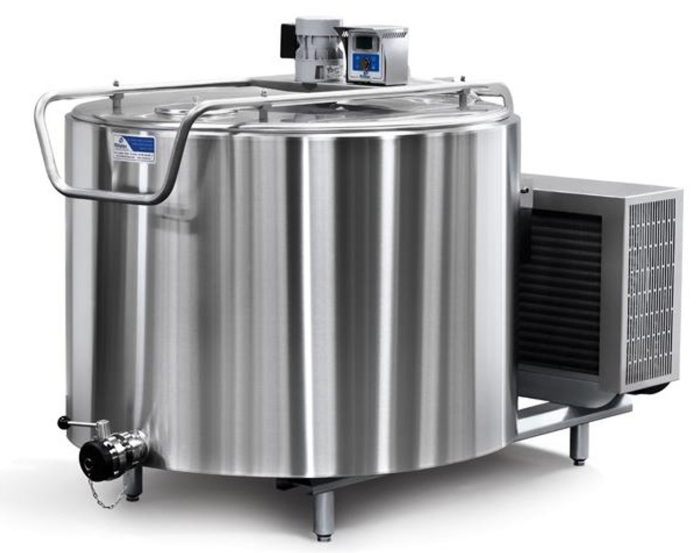A Milk cooling tank is the particular storage arrangement for keeping the temperature of fresh milk low up to the time that it gets transported from a dairy farm or milk processing plant. The temperature of milk is usually maintained at 4 degrees Celsius whereby bacterial growth and spoilage are inhibited. Generally installed in these tanks, which are mostly made of stainless steel, are refrigeration units and agitators for uniform temperature and quality.
Key Growth Drivers and Opportunities
Integration of Smart & IoT-Enabled Systems: The term Smart & IoT‑Enabled Systems in the milk cooling tank means the addition of advanced technologies sensors, internet connectivity, and data analytics into the conventional equipment for milk cooling. The real-time temperature monitoring as well as milk volume, energy consumption, and performance monitoring makes the system very reliable. Being more reliable systems reduce operational costs and allow them to work in compliance with food safety standards a pretty good upgrade to modern dairy operations.
Challenges
The Milk Cooling Tank encounters constraints in the form of very high initial investment costs: particularly small and medium dairy farms; coupled with the general unavailability of reliable electricity in rural areas. Furthermore, problems with maintenance facilities; due to a lack of technical know-how; and also, low awareness levels regarding advanced cooling technologies in developing countries will impede widespread adoption and hence market growth.
Innovation and Expansion
Serap India Introduces Smart Cooling Solar-Powered Milk Collection Facilities
In May 2025, Solar-powered milk collecting facilities outfitted with cutting-edge Serap Milk Can Coolers and Bulk Milk Coolers are Serap India’s most recent dairy technology invention. By using renewable energy sources, this project seeks to transform milk collecting in rural India and improve the sustainability and efficiency of the dairy supply chain.
To ensure that milk stays fresh from collection to processing, the new centers use solar energy to operate milk chilling equipment. This strategy not only lessens dependency on traditional power sources but also tackles the problem of electricity supply in isolated locations.
Eco-Friendly CO₂ Refrigerant Milk Cooling Tank Introduced by Wedholms
In April 2024, the first milk cooling tank to employ CO2 as a refrigerant in conventional cooling systems of the direct expansion cooling type was launched by Wedholms to the European market. The tank complies with the updated F-gas Regulation, which will go into effect in the EU in January 2025.
The DFC 953 line of milk chilling tanks has a capacity of 3,200 to 30,000 liters and may be used for robotic milking with one to eight robots.
DeLaval and Serap Collaborate to Enhance Milk Cooling Tank Products
In April 2024, The DeLaval milk coolers, which were created by SERAP and purchased from them, will have their own technical standards and be marketed as DeLaval. In order to meet the various demands of DeLaval’s clientele, this range will be similar to DeLaval’s earlier milk tank offers. With production sites in France, India, Brazil, and Mexico, SERAP was the obvious choice for DeLaval in this partnership.
Inventive Sparks, Expanding Markets
In order for milk cooling tank companies to grow, they must invest in energy-efficient and smart cooling technologies, expand into emerging markets, form strategic partnerships with dairy cooperatives, and offer customized cooling solutions.
About Author:
Prophecy is a specialized market research, analytics, marketing and business strategy, and solutions company that offer strategic and tactical support to clients for making well-informed business decisions and to identify and achieve high value opportunities in the target business area. Also, we help our client to address business challenges and provide best possible solutions to overcome them and transform their business.


